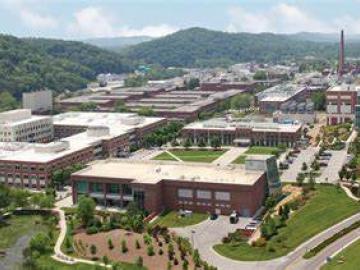Filter News
Area of Research
News Type
News Topics
- (-) 3-D Printing/Advanced Manufacturing (33)
- (-) Big Data (21)
- (-) Bioenergy (46)
- (-) Frontier (19)
- (-) Transportation (25)
- Advanced Reactors (6)
- Artificial Intelligence (38)
- Biology (53)
- Biomedical (26)
- Biotechnology (9)
- Buildings (16)
- Chemical Sciences (19)
- Clean Water (14)
- Climate Change (44)
- Composites (5)
- Computer Science (76)
- Coronavirus (17)
- Critical Materials (1)
- Cybersecurity (14)
- Decarbonization (39)
- Emergency (1)
- Energy Storage (28)
- Environment (98)
- Exascale Computing (21)
- Fossil Energy (3)
- Fusion (27)
- Grid (20)
- High-Performance Computing (38)
- Hydropower (5)
- Isotopes (23)
- ITER (2)
- Machine Learning (19)
- Materials (37)
- Materials Science (36)
- Mathematics (5)
- Mercury (7)
- Microelectronics (2)
- Microscopy (19)
- Molten Salt (1)
- Nanotechnology (16)
- National Security (30)
- Net Zero (6)
- Neutron Science (43)
- Nuclear Energy (49)
- Partnerships (11)
- Physics (25)
- Polymers (7)
- Quantum Computing (14)
- Quantum Science (23)
- Renewable Energy (1)
- Security (10)
- Simulation (23)
- Software (1)
- Space Exploration (11)
- Summit (29)
- Sustainable Energy (36)
- Transformational Challenge Reactor (3)
Media Contacts

Rishi Pillai and his research team from ORNL will receive a Best Paper award from the American Society of Mechanical Engineers International Gas Turbine Institute in June at the Turbo Expo 2024 in London.

ORNL’s Omer Onar and Mostak Mohammad will present on ORNL's wireless charging technology in DOE’s Office of Technology Transitions National Lab Discovery Series Tuesday, April 30.

ORNL’s Erin Webb is co-leading a new Circular Bioeconomy Systems Convergent Research Initiative focused on advancing production and use of renewable carbon from Tennessee to meet societal needs.

Scientists at ORNL have developed 3D-printed collimator techniques that can be used to custom design collimators that better filter out noise during different types of neutron scattering experiments
ORNL scientists have determined how to avoid costly and potentially irreparable damage to large metallic parts fabricated through additive manufacturing, also known as 3D printing, that is caused by residual stress in the material.

New computational framework speeds discovery of fungal metabolites, key to plant health and used in drug therapies and for other uses.

In summer 2023, ORNL's Prasanna Balaprakash was invited to speak at a roundtable discussion focused on the importance of academic artificial intelligence research and development hosted by the White House Office of Science and Technology Policy and the U.S. National Science Foundation.

Researchers at ORNL became the first to 3D-print large rotating steam turbine blades for generating energy in power plants.

A team of computational scientists at ORNL has generated and released datasets of unprecedented scale that provide the ultraviolet visible spectral properties of over 10 million organic molecules.

Scientists from more than a dozen institutions have completed a first-of-its-kind high-resolution assessment of carbon dioxide removal potential in the United States, charting a path to achieve a net-zero greenhouse gas economy by 2050.




